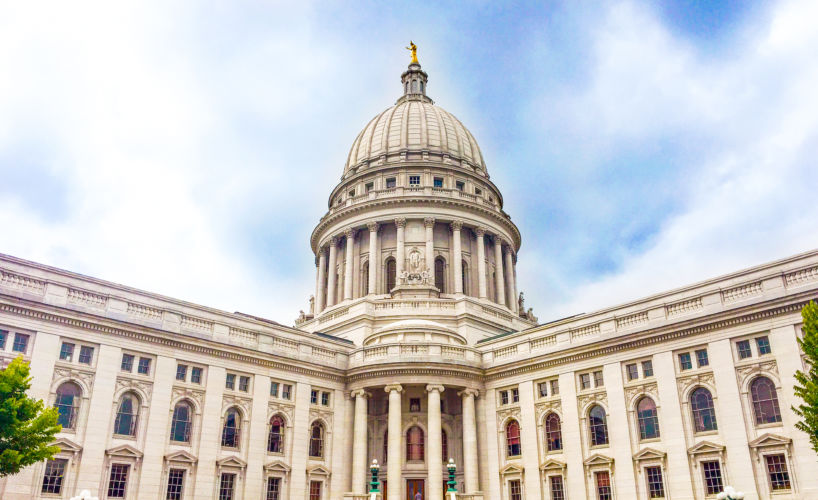The Wisconsin State Budget (2021 Act 58) was finalized after the State Assembly and Senate approved identical versions in late June, and the Governor issued his final action on July 8th. The budget is the two-year revenue and expenditure plan that funds our state agencies and programs. At nearly $90 billion, the state budget is an important expression of public policy.
Among the programs funded by the state budget are those that directly or indirectly support investments in wetlands. WWA also tracked a number of programs for their potential to integrate wetland restoration to help address water-related problems. Here is a rundown of budget action on a few of these programs:
- Waterfowl Stamp – Since 1978, funds generated from the Wisconsin waterfowl stamp have been available through the Waterfowl Stamp Program to help manage, preserve, and restore wetland habitat. The state budget increased the Wisconsin waterfowl stamp by $5 to a total cost of $12. Combined with other state and federal stamp funds, this increase will boost waterfowl stamp revenues by between $247,000 and $285,000 annually, enabling more wetland habitat work in Wisconsin and in vital propagation areas in Canada.
- Waterway and Wetland Database – The state budget provides $440,000 to help the WDNR develop a new waterway and wetland permit database. This was also proposed in Governor Evers’ budget. This update will help Wisconsin modernize the technology used to store and organize wetland permit data and improve public access to information on wetland impacts and restoration.
- Knowles-Nelson Stewardship Program – This is Wisconsin’s main program for land acquisition and conservation easements, which can include wetlands. One report indicates the state has conserved about 165,000 wetland-associated acres since the program started. The state budget extended the Stewardship Program for 4 years (until June 30, 2026) and provided $33 million, allocated among the subprograms. This is less than Governor Evers’ proposed 10-year program extension and budget of $70 million per year.
The state budget also includes a multitude of programs oriented to addressing land and water management or water quality concerns. While some of these programs include wetland restoration as an eligible practice to help address concerns, more needs to be done to increase the number of wetland projects that happen through these programs so they are more effective.
- Urban Nonpoint and Municipal Flood Control Grant Programs – These programs assist local governments with controlling urban nonpoint source and storm water runoff, and managing flood impacts through structure removal, easement rights, flood-proofing, flood mapping, detention ponds and riparian restoration. Although in theory wetland restoration is eligible for the Municipal Flood Control Grant Program, in practice these projects are infrequently funded due to the scoring rubric that favors buyouts and removing structures from the floodway with limited funds. The state budget provides $4 million in additional bonding for this program over the two years. While this is in line with what was provided in the last state budget, it is much less than the $12 million originally proposed by Governor Evers.
- Producer-Led Watershed Grants – This relatively new program provides grants to groups of agricultural producers who form a producer-led watershed group to collaborate on the implementation of runoff management practices. Numerous producer-led watershed groups have identified flooding, erosion, soil/sediment loss, and floodplain health as issues. Wetland and floodplain restoration hold great potential to help our agricultural producers begin to address these issues. The state budget provides $250,000 in additional funding each year, bringing available producer-led watershed grant funding to $1 million in each year of the budget.
- Nitrogen Optimization Grant Program – This new program was proposed last session and again in Governor Evers’ budget proposal to build capacity for on-farm research focused on reducing nitrates in surface and groundwater. WWA supported this program because a recent study by the National Science Foundation published in Nature Geoscience (January 2018) reported that in the right locations, wetlands can be five times better at reducing riverine nitrate than comparable acres of land-based strategies such as cover crops or land retirement. Unfortunately, the state budget did not include this program.
- Rural Non-point Source Bonding – This program supports the Targeted Runoff Management Program and helps farmers install structures to prevent soil and animal waste runoff. Not only is it important to consider the impacts of nonpoint pollution on wetlands, but also wetlands can be part of the solution to run-off impacts. The state budget provides $6.5 million for this program, which is in line with past state budget allocations.
- Soil and Water Resource Management Bonding – This program helps farmers implement best management practices to reduce soil erosion on farms and improve manure storage. The state budget provides $7 million for this program over the next two years. This is in line with previous budgets.
- County Conservation Staffing –County conservation staff are often the first contact for those needing assistance for land and water problems and they can connect landowners with the programs that can help them. The state has a goal of supporting county conservation staff positions, but in reality, that funding does not come close to reaching that goal. The state budget provides $4.3 million for county conservation staff during the 2021-2023 biennium. This funding will expire if not renewed in the next state budget.
The investments Governor Evers and the Wisconsin State Legislature have made into existing programs are important. But program adjustments—or entirely new approaches—are needed to elevate the appropriate use of wetlands to manage water-related problems, whether flooding, drought, erosion, water quality, or habitat loss concerns. WWA will continue to explore areas where wetlands can be the new approach and solution to problems facing our communities.

